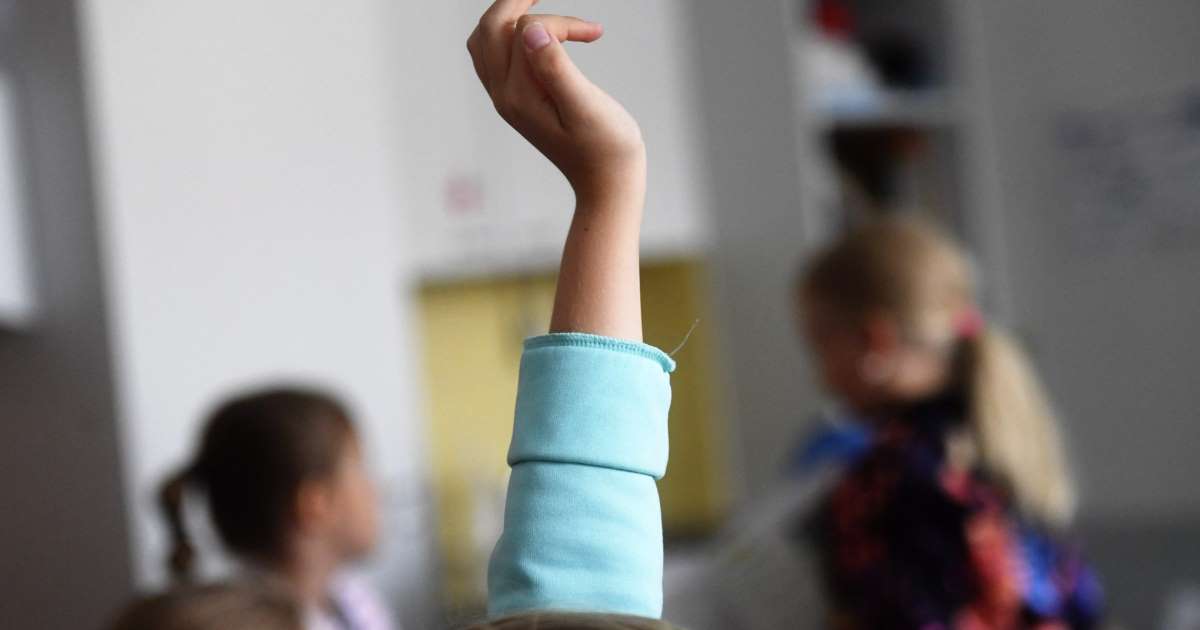© Magazine image
According to the evaluation, the educational background of the parents and the learning difficulties in the immediate family, among other things, affect the competence levels of children starting school. NEWSPAPER / VESA MOILANEN
Home and language background has a significant effect on the competence levels of children starting school, according to a recent evaluation by the National Education Assessment Center Karvi.
According to it, there were five key risk factors associated with students ’mother tongue and math entry level. These include the low educational background of the parents and the learning difficulties in the immediate family. Those born at the end of the year also had more learning difficulties than those born at the beginning of the year.
If the student’s mother tongue is other than Finnish or Swedish, his or her starting level was about 80 points lower than that of those studying Finnish or Swedish as their mother tongue. One learning disability observed in the immediate family affected the child’s competence by about 30 points and two learning difficulties by about 50 points.
Compared to caregivers with no more than vocational training, caregivers with a university background gave the child a 77-point lead. Higher education for caregivers seemed to be beneficial, especially for boys born late in the year.
Project manager Annette Ukkola from Karvi does not find the findings surprising.
– These are all factors that were already known in advance that they can pose a challenge to learning. At the same time, they are ones that the child cannot influence himself.
Pupils’ competence was uniform across Finland and there were little differences in competence according to gender, marriage area or the language of instruction at school. At the individual level, the differences in competence were huge.
Early identification of support needs is key
Marjo Rissanen, Education Adviser from the National Board of Education, tells STT that early identification of support needs is essential in reducing children’s skills gaps.
– It is essential to identify the support needs of children and families at an early stage and to consider what can be done to promote the child’s learning and well-being.
For example, Rissanen raises the program for the development of the quality and equality of early childhood education for 2020-2022, launched by the country’s government. It seeks measures to halt inequalities and support children’s learning, well-being and literacy.
Based on Karvi’s assessment, early childhood education forms and long-term early childhood education and care solutions had no unambiguous link to baseline.
Based on the results, it appears that full-time early childhood education is particularly beneficial for children whose lives have accumulated a number of risk factors that predict a low starting level. The average baseline for children in pre-primary education was also systematically higher than for children in home care after pre-primary education.
– However, there was no early childhood education path that would have been definitely the best for everyone, Ukkola says.
Reading hobbies increase young people’s skills
Of the hobbies and interests, the strongest connection to the entry level was related to the family’s reading hobby, which included both reading the child himself or reading aloud to him. Reading turned out to be a hobby especially for educated families. Of the children of university-educated guardians, 77 per cent enjoyed reading or listening, while only about half of the children of carers with no more than a vocational degree enjoyed reading.
According to Ukkola, girls had more guided hobbies than boys. Nevertheless, there were no significant differences in the skill levels of girls and boys, although studies in older children have found differences in the skills of girls and boys.
For example, Pisa surveys conducted on young people show that the skills of Finnish boys are on average weaker than those of Finnish girls.
– In that sense, this was a nice result. For example, in studies of ninth-graders, there are differences in skills between girls and boys, but there is not yet a baseline at the beginning of school.
Social relationships are also related to a child’s level of competence. Children who did not have any friends when they came to school had lower skills.
– It is hoped that friendships will be established during schooling.
The initial measurement started the longitudinal evaluation
This is the first time that skills gaps between schoolchildren have been measured nationally. Almost 7,700 students from all over Finland took part in the measurement. Pupils were surveyed for skills related to mathematics and mother tongue and literature during the first weeks of school. The skills of the same students will next be assessed in September in the early weeks of the 3rd grade. This provides information on how much the school will produce more competence during primary education.
– It will be interesting to see what happens during the longitudinal evaluation, Ukkola answers.
